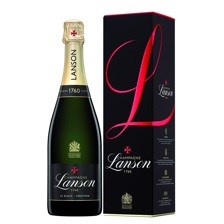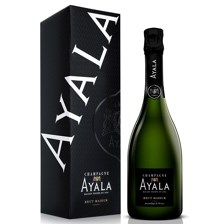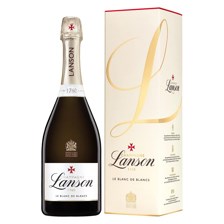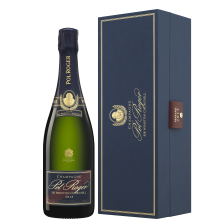When it comes to champagne, what you drink it from can be just as important as what you’re drinking. From using a champagne flute to swapping it with a stemless glass, there’s plenty of things to learn about the relationship between glassware and bubbly.
But what many don’t realise is that what you do before pouring yourself a glass is also key to getting the most out of your champagne. So, this begs the question: should you or shouldn’t you decant champagne?
In simple terms, decantation is the process of pouring liquid from one container into another. In alcoholic beverages, this process is usually reserved for whisky, bourbon and wine. So why are these drinks decanted?
Wine, for example, is decanted to separate the sediment that settles at the bottom of the bottle. Sediment forms from dead yeast cells, leftover grape solids like its skin, pulp and seeds and other leftover solids from the winemaking process. Through decanting, you can slowly pour the wine onto another container, usually called a decanter, and leave the sediment at the bottom of the bottle.
Apart from that, you can decant a bottle of wine to introduce more oxygen to it. Young bottles of wine are usually tight and inexpressive, but decanting a bottle gives the beverage more room to aerate. When the wine has time to breathe, the aromas and flavours open up. This allows you to enjoy full-bodied wines, such as Cabernet Sauvignon and Syrah blends, even better.
Like almost anything, though, there are those who are against the process of decantation. Some people claim that simply pouring wine into your glass and swirling it has the same effect as decanting. Of course, this is a personal preference. You can experiment to discover which method lets you enjoy the intricate flavours of wine better.
In spite of some non-believers, the decantation of still wine is still a widely accepted practice. But what about champagne?
Should You Decant Champagne?
Champagne, a type of sparkling wine made specifically in the French region where it got its name, isn’t typically decanted today. This is mostly because people see champagne as a sparkling beverage first, wine second. Some are afraid that decanting champagne will make it lose its signature fizz.
What’s more, unlike wine, which you drink throughout a meal, champagne is usually served as an apéritif or a pre-dinner drink. It’s like a liquid appetizer that you enjoy before the main course. So, for many, letting it sit open in a decanter for a while is an unnecessary step.
However, more and more sommeliers, consumers and other champagne experts are seeing the benefits of decanting champagne. In an interview with Business Insider, glassware expert Maximilian Riedel, CEO of renowned glassware company Riedel, says that every wine must be decanted.
"When I say every wine, I truly mean sparkling and still,” he said.
He further explained that decanting champagne was a regular practice back in the days. He said, "In the old days, you bought the champagne, took it home, then you had to gently decant it to keep the yeast in the base of the bottle." This was done to split the wine from the yeast, which, today is accomplished using a machine.
Why You Should Decant (Some) Champagnes
Champagne can be categorised into two main styles: oxidative and reductive. These two categories are from the winemaking process champagnes undergo. Oxidative winemaking involves ageing wine in oak for several years, allowing it to interact with oxygen in an aerobic environment.
Some of the most popular oxidative champagne houses are:
In contrast, reductive winemaking involves minimal oxygen exposure to protect the grapes and preserve the fruit’s aromas and flavours. This makes champagne made from reductive winemaking, especially the younger bottles that haven’t had the time to age for decades, difficult to drink because they’re dry and tight.
Some of the most popular reductive champagne houses are:
These reductive types of champagne that benefits from quick decantation. When you decant this type of champagne, that oxygen-deprived flavours can blossom. What’s more, decanting reduces the rotten eggs or sulphuric smell that develops during the reductive winemaking process present in some bottles of champagne.
On the other hand, you should take precaution when decanting more mature vintage champagnes. This is because as champagne ages, it begins to lose its effervescence. As champagne ages post-disgorgement or after the wine is separated from the yeast, the liquid becomes exposed to oxygen, making it more delicate over time. To decant this type of champagne means to risk it losing its fizz in mere minutes.
What’s more, as vintage champagnes age, their complex flavours move to the forefront. This renders the purpose of decantation useless when it comes to vintages.
When you receive a delivery of a champagne gift or decide to celebrate a milestone with a bottle of bubbly and it happens to be the kind of champagne that you’d want to decant, here’s how you can do it properly:
Store your champagne properly
Make sure not to expose your bottle of champagne to direct heat or extreme cold. If you’re going to serve it in a day or two, it’s a great idea to keep it in the fridge so you can enjoy it chilled. Otherwise, try to keep it in a cool place, like your wine cellar. If you chill champagne for several days in your fridge, the cork can dry out, which will cause it to loosen up. This results in the champagne oxidising prematurely, ruining its fizz.
Champagne is best savoured when it’s only slightly chilled. Excessive cold masks the champagne’s aromas and flavours. Since bubbly tends to be consumed quickly, your glass will be empty before it gets the chance to bloom and reveal its flavour if served too cold. This is where decanting plays its part.
Remove your chilled bottle of bubbly 15 to 20 minutes before you intend to serve it. Then, decant the content directly into the champagne glass it’s going to be drank from. Sommeliers and other experts say that it’s time to say goodbye to champagne flutes. While it concentrates the fizz, the shape of a champagne flute doesn’t allow the foamy liquid to properly breathe.
Instead, use tulip-shaped champagne glasses. The wider bowl of this type of glassware allows more bubbles to burst while the slightly tapered top helps capture and develop the champagne’s aroma. You can also decant champagne using a coupe glass. The wide rim and bowl disperse the bubbles quicker, helping bring out the champagne’s softer and fruitier flavours.
For best results, tilt the glass at a slight angle and pour slowly down the side. This technique will help reduce the foaming, so the champagne won’t bubble over the decanter quickly. About 15 minutes after decanting the champagne into a glass, it will have increased its temperature a little and breathed enough for the flavours to bloom.
Keeping Your Champagne Fizzy
As mentioned earlier, one of the main reasons some people are against decanting champagne is the thought of it losing its fizz or carbonation. And while we already established that a short length of decantation should be no problem, how about when you have leftover champagne?
If you have an unfinished bottle of bubbly, here are ways you can still enjoy it later as if it’s newly uncorked:
1. Use a champagne stopper
One of the simplest ways to keep your champagne’s effervescence is by using a champagne stopper. This type of cork is designed with the fizziness of champagne in mind. Simple reusing your champagne’s original cork can lead to a build-up of gasses in the bottle, forcing it out. You won’t have this problem with a champagne stopper.
2. Dangle a spoon in the bottle
While there’s no scientific evidence that putting a spoon handle side-down into the neck of a champagne bottle actually keeps the content fizzy, lots of people swear by this hack. Apparently, the metal of the spoon helps keep the neck of the bottle colder, which creates a plug of cold air that prevents gasses from rising quickly. If you try this, let us know how it works out!
3. Cling wrap and rubber bands
Like the spoon hack, this trick’s purported effectiveness comes from pieces of anecdotal evidence of people who’ve tried it. Unlike the spoon hack, though, there seems to be logic behind this. You simply have to cover the mouth of the champagne bottle with a bit of cling wrap then seal it tightly with a rubber band. This can help keep the air trapped inside, preventing the bubbly from fizzing out.
4. Invest in good champagne
The size of the bubbles in champagne reflects its quality. The larger the bubbles, the poorer the quality because these bubbles tend to pop faster. High-quality champagnes have smaller bubbles, so it takes them longer to fizz out and become flat. So, if you want a fizzy bottle of bubbly, investing in good champagne is the way to go.
If you need a place to get great quality champagne, Bottled and Boxed is what you’re looking for. We carry wine, champagne, prosecco and other spirits perfect for gifting it to your loved ones or to order for yourself. You can even elevate your champagne experience by ordering one of our themed hampers.
Start shopping for your next bottle of bubbly at Bottled and Boxed today.







